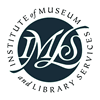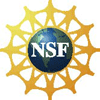ISMIR 2003 - Tutorials III and IV
Tutorial III
Music IR 201: Music Retrieval and Analysis
Presenter: Arbee Chen
2:00 to 5:00 p.m.
In this tutorial, we introduce various techniques for content-based music retrieval and analysis. The issues of music representation, similarity measure, index construction, query processing, and music analysis will be discussed. The features considered to represent music can be its acoustical properties, themes, melody, rhythm, chord, contour, etc. The suffix-tree based, n-gram based and list based index structures are most often used indexing schemes that will be detailed. The processing of incipit queries, non-incipit queries and approximate queries, as well as the consideration of an adequate similarity measure will be presented. The approaches for processing monophonic and polyphonic music will be surveyed. The performance analysis including efficiency and effectiveness of query processing and the performance measures will be also introduced. Various ways of music analysis using data mining techniques including sequential pattern discovery, repeating pattern discovery and classification and clustering will be presented. Music phrase segmentation, music sentence identification, association of pieces of determine the structures of music for music retrieval or music classification and clustering for applications such as music recommendation. Architecture for music recommendation will be also introduced.
Tutorial IVSound, Symbol, and Idea: Three Approaches to Music Query
Presenters: Eleanor Selfridge-Field and Craig Stuart Sapp
2:00 to 5:00 p.m.
The aim of this tutorial is to view current lines of research in the broader context of the ordinary activities of scholars, musicians, and theorists. On the one hand, those developing audio-based applications may benefit from a grounded knowledge of the tools in common use in these communities. On the other, audio researchers are increasingly looking to music scholarship to bring definition to concepts and procedures. Because there is little communication between audio-based and symbol-based approaches, with even less uptake of schematic views of music, it seems timely to examine areas in which the sharing of expertise could benefit all parties.



